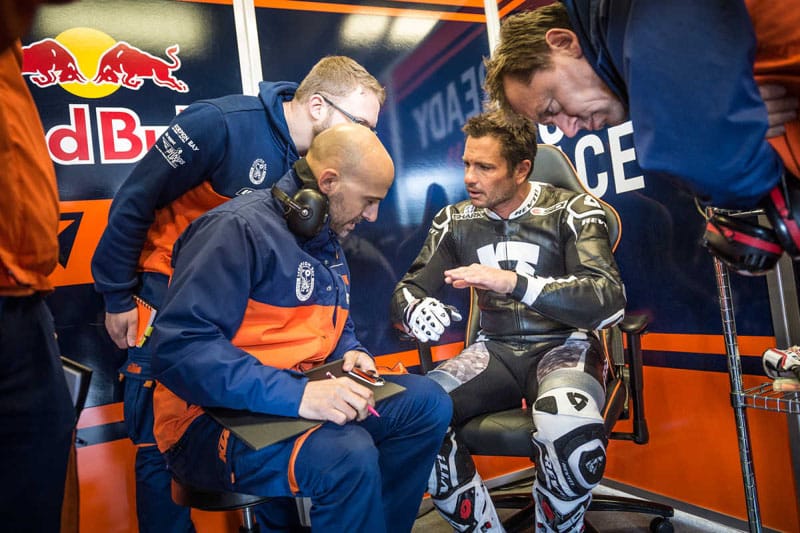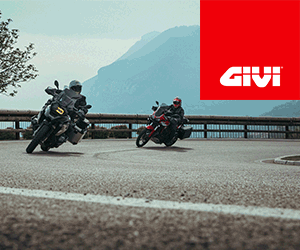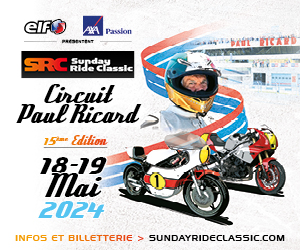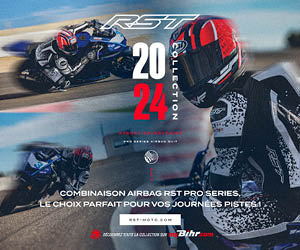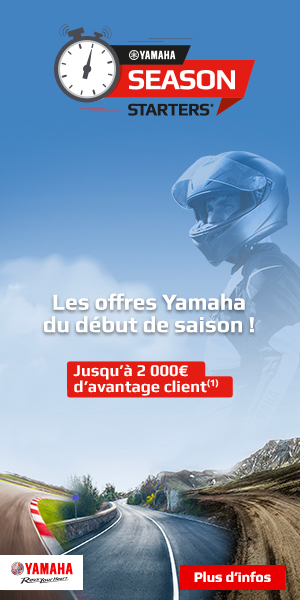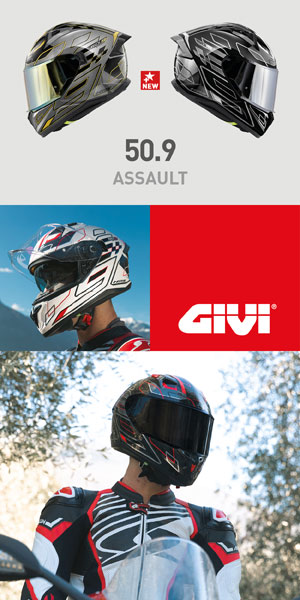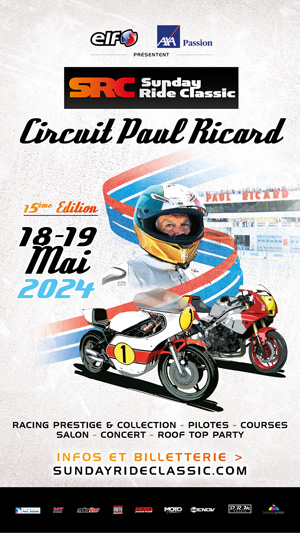To this day, very few Grand Prix drivers can boast of experience as great as that of Randy de Puniet.
The French rider actually began to tour the world championship circuits in 1999 and, after two years in 125cc, five in 250cc and eight in MotoGP on the Kawasaki, the Honda LCR and the Aprilia CRT, put on the rider's leathers tester for Suzuki and KTM. Needless to say, his experience is enormous and he knows what MotoGP is like!
But if his racing weekends took place in the spotlight, his activity as a test driver by nature remained in the shadows, so we asked him to tell us a little more about it, this which he did with the kindness that characterizes him.
Randy, can you describe to us, without giving away any secrets about this or that brand, what a typical day for test drivers consists of?
Randy de Puniet: “First of all, test rider is trying to develop a motorcycle and improve its performance in every way. The factory builds a machine and puts this machine in our hands so that we can say what areas need to be improved to make the bike perform better. We work based on that. Upstream, the engineers prepared a large work program and brought parts to test, such as frames, motors, swinging arms, in short a lot of things without even mentioning the electronic part which also needs to be developed. So there are certain days where we focus on one point and others on others. And when you think you've found the best package, you put everything together and try to get the best possible performance from the machine. As a test driver, what's good is that you see the evolution of the work put in by the engineers and the pilots. We have the satisfaction of seeing the progress made, which compensates for other more complicated moments where, inevitably, we are confronted with technical problems. When everything is new, there are things that are sometimes difficult to manage, and it can happen that the driver, me (laughs), remains in leather, sitting on a chair for two or three hours in the box waiting for the problem to be resolved. resolved. Generally speaking, it's very hard to manage to stay focused throughout the day, not to make mistakes, and above all for your brain to be 100% ready to analyze things: if you don't analyze things are good, we're doing a bad job. And if we give bad direction, it is no longer bad work but very bad work! That's why being a test driver, you have to be very, very honest with your engineers, and even if you don't feel anything, you have to say it. In this case, it may be necessary to do a second test so as not to take a wrong direction, because otherwise, the entire project may ultimately suffer. »
During most sessions, do you follow a program pre-established by the engineers, for example with parts to try, or do you start with the “raw” bike and point out this or that point for improvement as soon as possible?
“In fact, at the beginning, when the bike arrives, there isn't much planning. I ride as much as possible and I rough up the work. But once there have been several sessions done, there is really a basic schedule based on previous tests. With the information they have collected, they either bring us new parts to try to resolve this or that problem, or adjustments to the suspensions or electronics. It all depends on the problems we encounter and especially at what stage of development we are. But I have already tried, over three days of testing, four different frames and two engine configurations. There, these are still big things to try and we are not idle. »
When you give your opinion on this or that point, do you know the time you set or is it completely uncorrelated from that?
“Yes, of course the timer is there. But there are times when I ask them not to set the clock for me so that I work only with my feelings, without focusing on the clock, because sometimes we tend to look at it too much. What you also have to take into account when you do test days is that you often drive with worn tires. So if we use a setting with tires that have 25 laps and the time is perhaps 2/10 slower than our best time, we have to say to ourselves “ah, maybe by switching to a new tire, I can get five or six tenths. You often have to take these things into account. At the beginning, when I asked for new tires, they often had the impression that it was for performance purposes, but later they understood that it was just to validate this or that modification. Afterwards, you also have to find the feeling with the team, but what is good is that we have time to work and there is not the pressure of a Grand Prix weekend . Now, real test days are from 10 a.m. to 18 p.m. It's long, you have to stay focused, and even if it's runs between five and eight laps, you always have to stay efficient and use your brain to try to catch the smallest little detail that could allow you to progress the most. quickly possible. Even in exit laps and re-entry laps. »
From what you describe to us, the days seem long and difficult and they require a lot of self-sacrifice in the sense that all your efforts are concentrated on making the bike progress. In this sense, we are far from a Grand Prix weekend where each driver plays his own game. Where do you find your satisfaction?
“The satisfaction is seeing the bike progress. And then, what I asked them for was that at the end of the day they would give me one or two new tires so I could have fun. Because, indeed, I needed to have fun and let off steam, while giving my best with the best possible package to see where we were, since we were leaving on this basis the next day. It was a good fight: we worked 95% of the time and, at the end, it allowed me to let off some steam and also to keep the rhythm a little bit, because when we're testing, we're running at 90%. We can't ride at 100% every lap, it's not possible, and driving below 90% would be of no use because we would be too far from the times. You have to keep a small margin but don't hang around either. »
When you come back from a run, you describe what you feel, but does that go as far as recommending solutions or is it the engineers' job to find them?
“I detail everything I felt on the bike. If there is something that I think would be useful to help them go faster, I tell them, but generally they are the ones who come up with solutions. I'm not an engineer. There are pilots who call themselves engineers but I think they are mistaken. Each has its place. The test pilot's job is to bring back the best possible information and the clearest possible information. And that's what makes Rossi strong when you talk to people around him: Rossi is a racing driver, who wins races and titles, but when he comes in and describes what's happening on his machine, he explains everything, point by point, detail by detail, and doesn't let anything slip, unlike the other pilots. This is what makes it strong. »
This year, you are no longer a MotoGP test rider. Was that no longer motivating enough for you to continue in this field?
“No, because I've done quite a bit and it's true that where I am in my career, I still want to have fun. If there had been a testing program, with a wild card or even Endurance in parallel, it would have been interesting. I take the example of Michele Pirro who is in the Italian championship at the same time as a MotoGP test rider for Ducati. And even if the machine he races with has nothing to do with MotoGP, he races and that's what he asked for: he needs to stay competing! And we see his level in testing and when he comes to MotoGP; It's far from ridiculous! Ducati understood that by only making him do tests, he would lose his motivation a little. It's the same with Mika Kallio's wild cards. You have to keep the driver motivated. We don't have the same perspective at all when we go for a racing weekend or when we go for three days of testing. It's normal. »










